Mind mapping, or how to make your brain work better
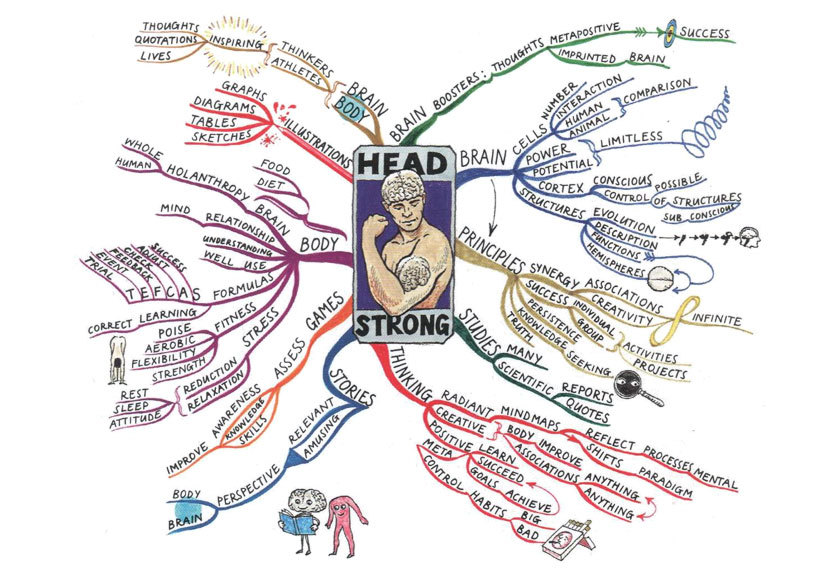
“If you don’t break your brains, you will break firewood”
There are dozens, and maybe hundreds, of methods for pumping your brain, because it contains many opportunities, access to which we often have limited. “Eat bitter chocolate”, “Hang stickers around the house”, “Start with the most important things” and many other tips you can find on the Internet, the essence of which boils down to one thing - push our brain to work quickly, run it to the fullest, or even “Cheat." And all for the maximum benefit - to do a lot of things, remember more information, defeat laziness and so on. Man has always tried to squeeze the maximum of his abilities.
In the 80s of the twentieth century, another such method was invented - Mind Mapping technology or the use of mental maps. And as practice shows, the method is far from the worst, and worthy of attention.
In this article we will consider such questions:
- What is a mental map?
- How to create a mental map?
- Are there any programs for creating mental maps?
- What to read on this topic?
For those who like to listen more than read - my interesting (I hope) report on GetDev :
What is a mental map?
What is this technology?
“In this world, to stand still, you need to run”
The use of mental maps is a technique of visualization of thinking, with which you can better and more efficiently process some information. Mental maps have many different names: The
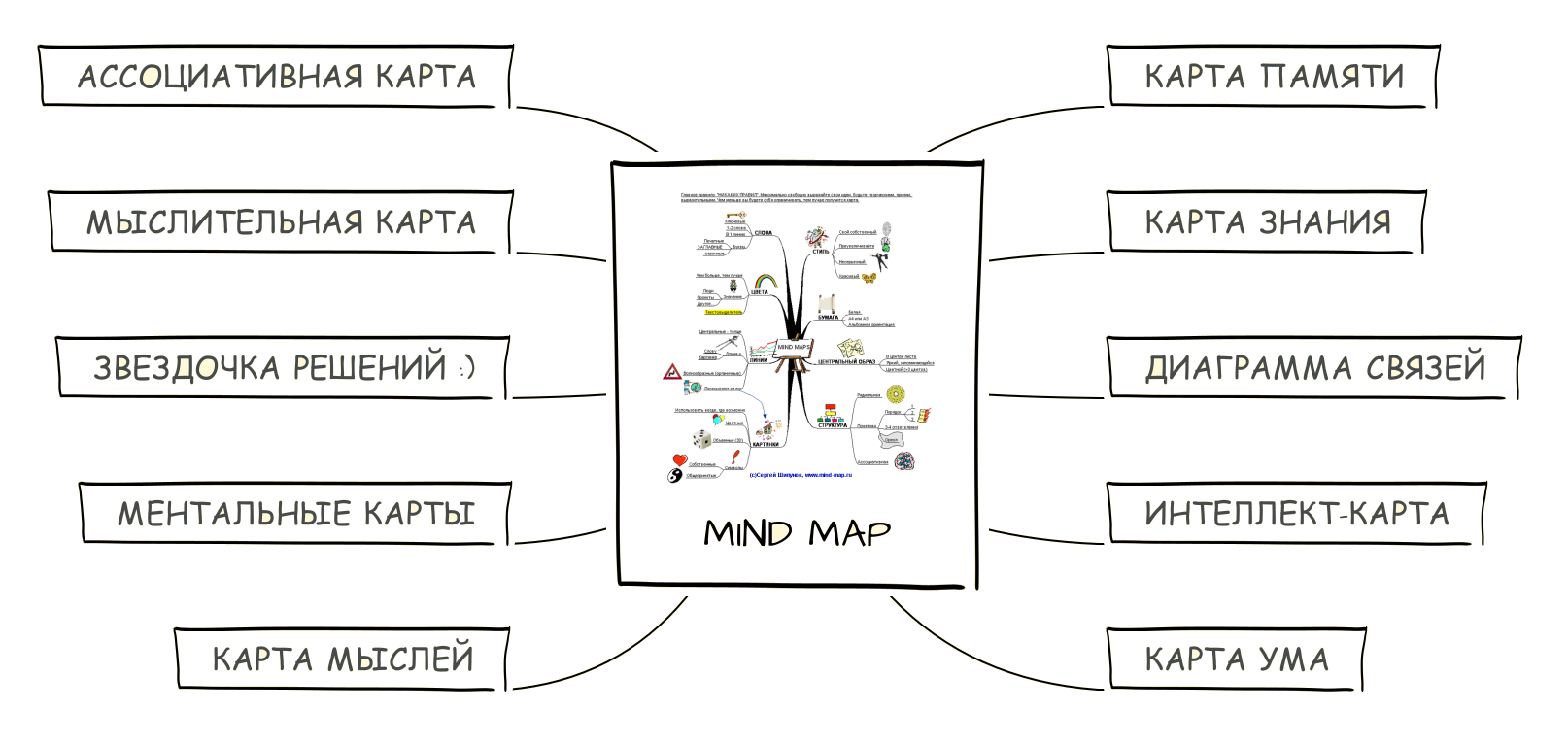
technology is widely used for many purposes:

- Commit information. Mental maps are a convenient form of data recording, allowing even with a large volume to present it in a capacious form.
- Memorization of information. When you record something in a convenient light form, it is automatically put off in the head.
- Easy access to information. The data recorded in the form of mental cards is easy to remember, even giving them only one glance.
- Analysis of information. The mental map is constructed in such a way that allows you to see previously unnoticed connections between its parts, small unaccounted details, which is very valuable when making decisions. Also, with its help, you can throw out all the information in general, in a comprehensive manner, which in general helps to understand the topic and better understand this data.
Mental maps make it easy to operate with information, which makes them very useful in many areas of our lives:
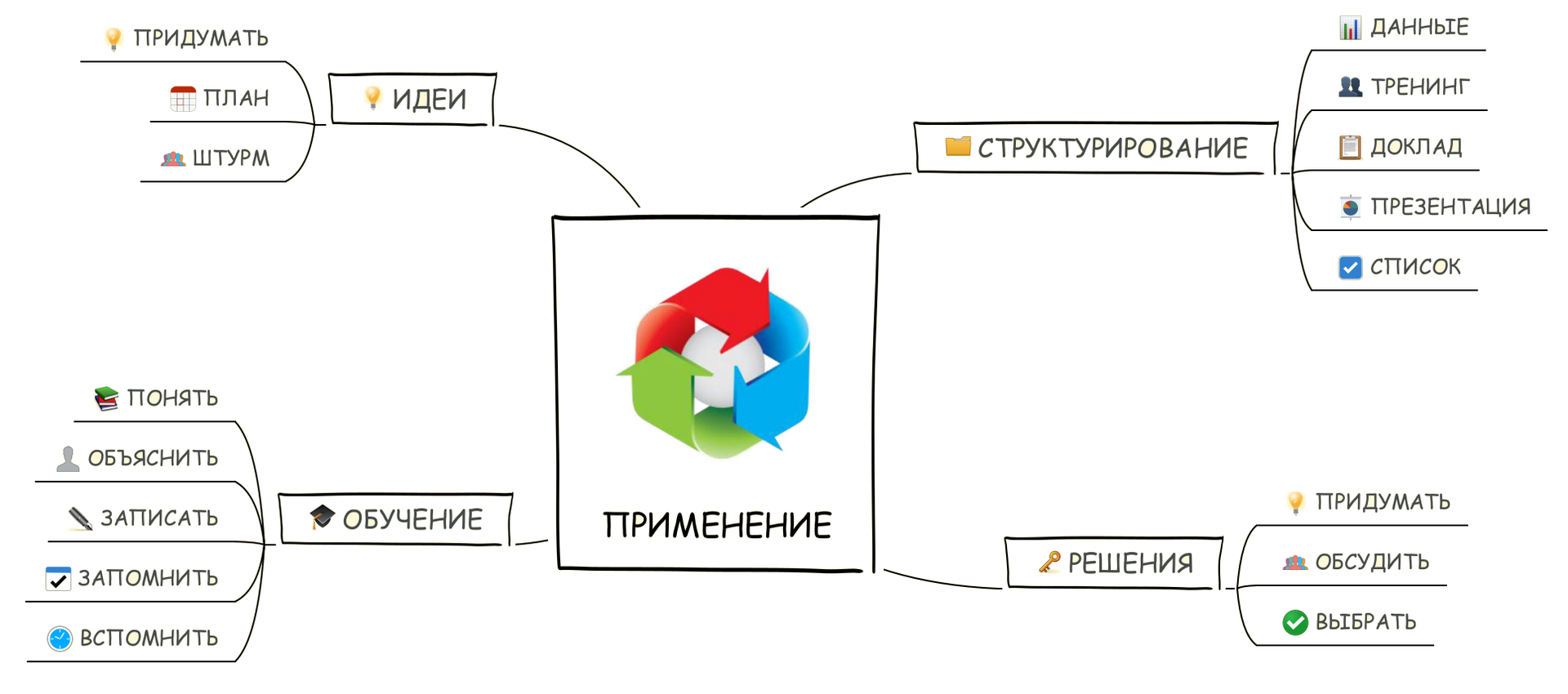
Why use it?
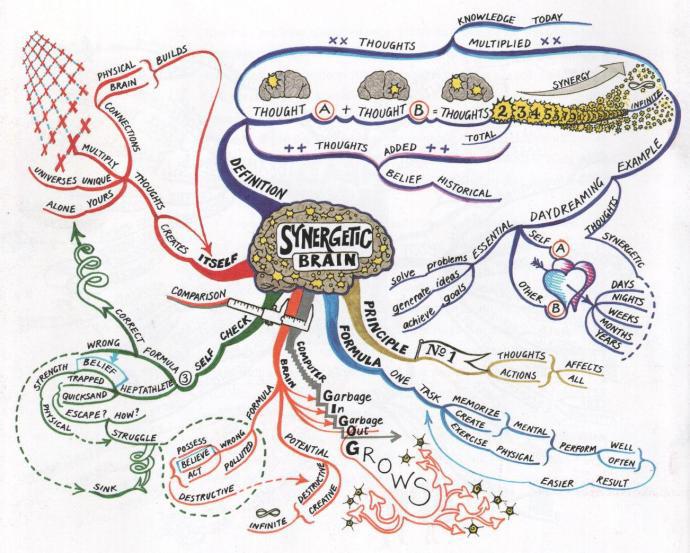
“The thought repeated twice is well remembered.
The thought repeated twice is well remembered ”
Mental maps help when working with any data, improve the brain's ability to perceive information, but why?
The first reason lies in the construction of the map itself - it is depicted in a radial form, the key image is in the center, and further branches diverge from it. This simplifies the flow of information to the brain - because we also see the world around us as a whole - the central image and the details around it.

The second reason also lies in the processing of information by our brain - visualization as a whole improves perception . We remember words with pictures 6 times better than just words.
When building a mental map , various abilities of our thinking are activated.. When compiling branches and keywords, we use hierarchies, for pictures - visualization and associative thinking, in general, spatial-shaped thinking is used. All this activates memory and allows you to remember both the data structure and their important aspects, so the use of mental maps improves the storage of information by about 32% .
Since we use various thinking abilities to build mental maps, such as creativity, logic, imagination , they all develop and improve in the process .
Since mental maps display the whole picture as a whole, this allows you to establish all the relationshipsbetween objects, even if initially they were not so obvious. In turn, this leads to the emergence of a new point of view on information, as well as new ideas and thoughts. The structure and logic of the data becomes more “transparent”, easier to understand and remember.
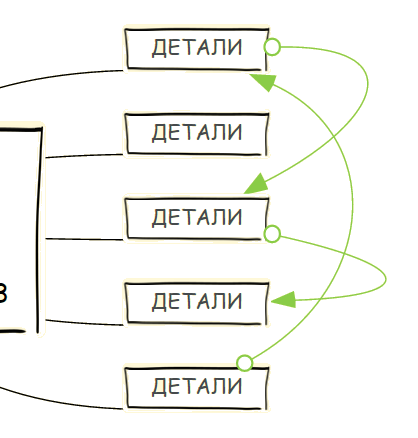
Another indisputable argument in favor of the use of mental maps is that it is very easy to learn this technique , and you can memorize information with its help right away, in large quantities and very effectively. In this case, writing is not enough, which saves time .
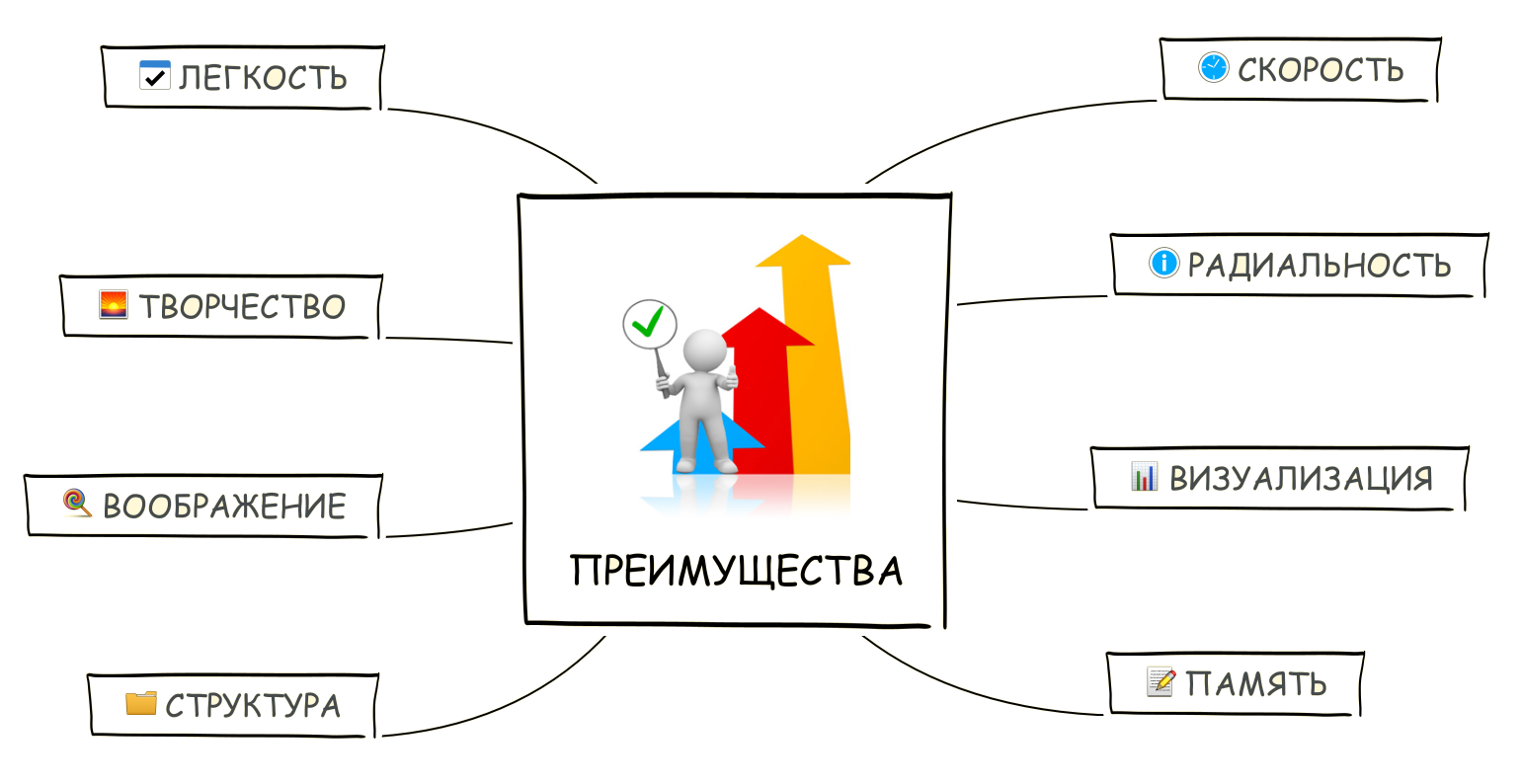
What are the differences from regular recordings?
“Clarity gives focus”
Line recording is the main form of recording information that we use at school, university, work, and in many many institutions. It is used in instructions, books, posters and generally everywhere. Therefore, the use of such a form seems logical, convenient and correct.
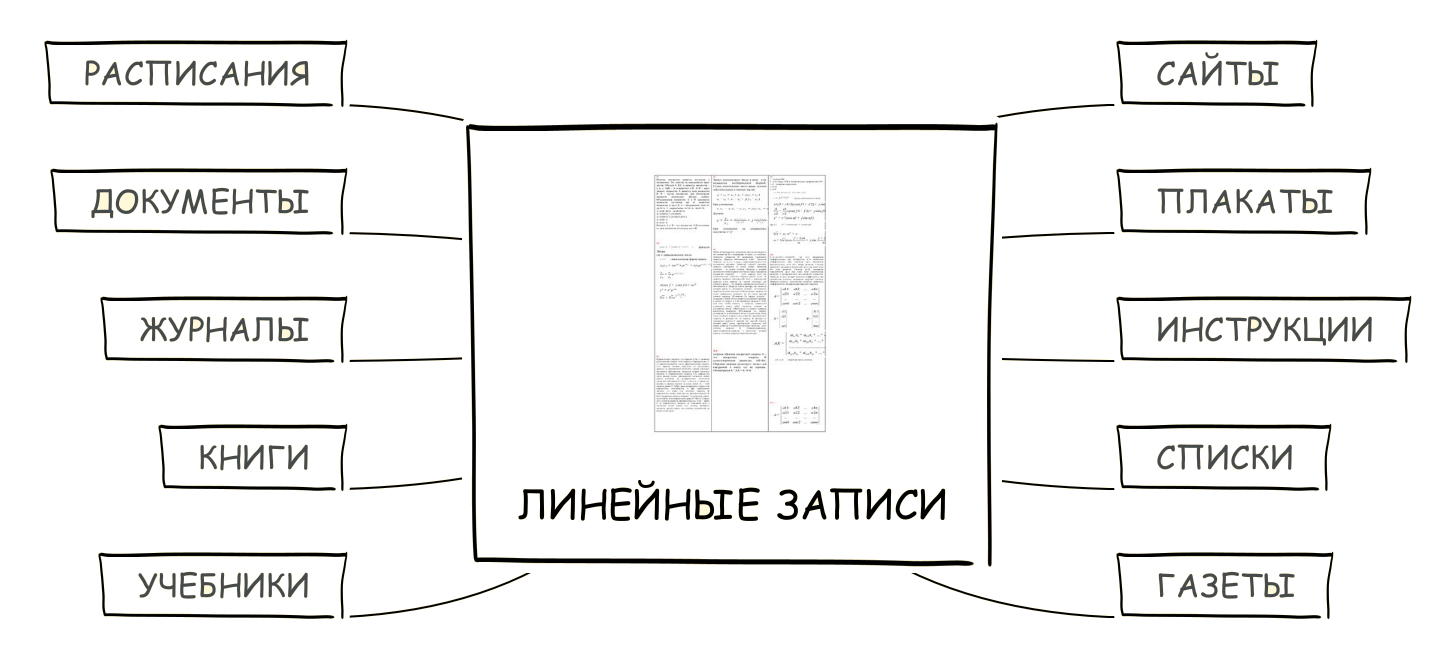
But can it only be a habit? There are some differences between line recordings and mental maps, which may make it worth changing your habits.

- The whole structure of vertical textual information is quite difficult to see , and to see everything, it may take additional actions, such as turning or scrolling the page. And the cards are built on a circular basis, and with one glance you can cover with a glance everything that is depicted.
- The line list is “psychologically” incomplete ; it can be continued, which prevents us from perceiving it holistically. The finished map has all the elements in place, it is thought out, arranged and integral.
- Our brain doesn’t memorize monotonous recordings in the best way , unlike various pictures, colorful branches and colorfully decorated keywords.
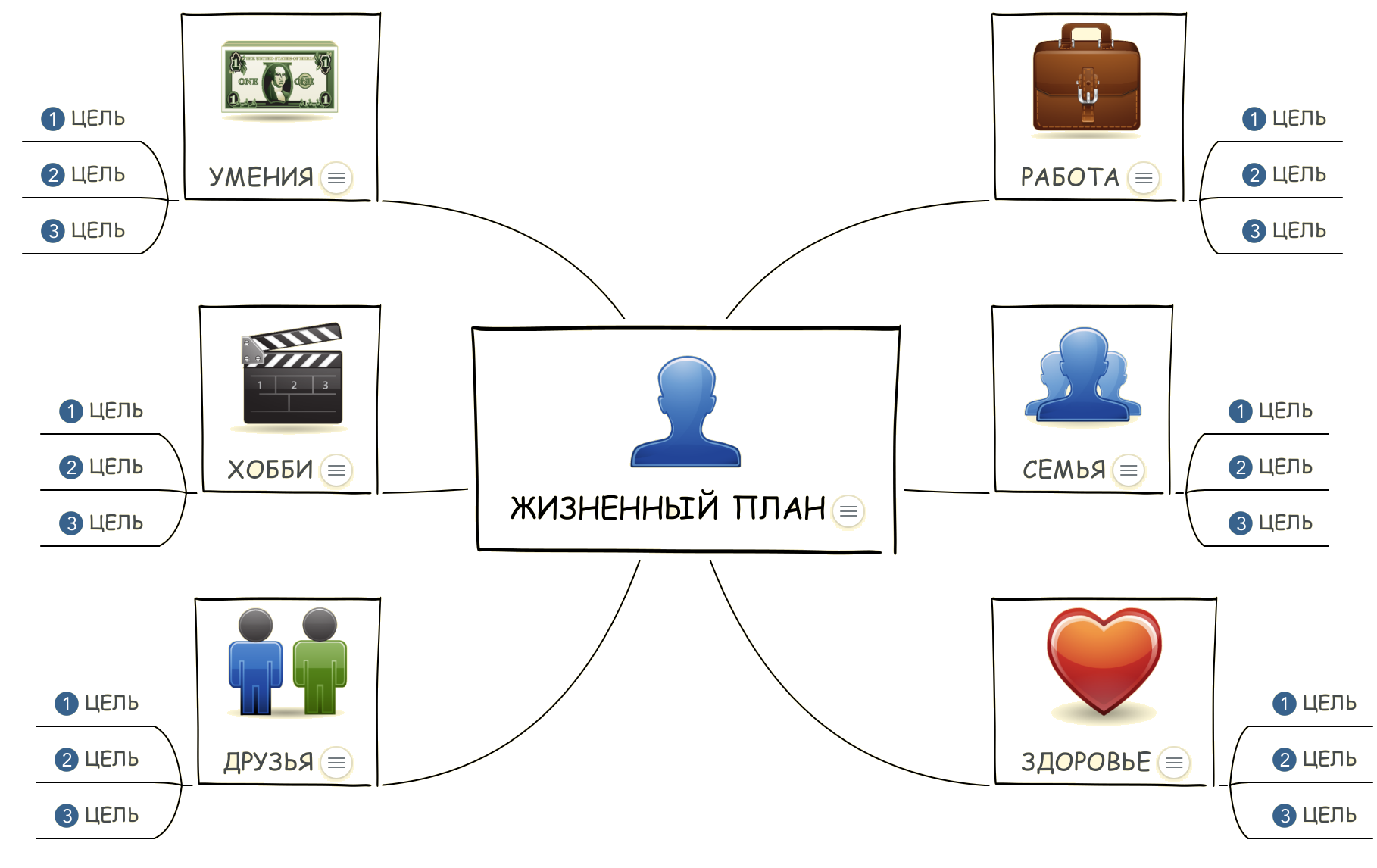
- In ordinary recordings , it is rather difficult to single out the most important idea ; it is lost in numerous lists, highlighted and underlined words. On the mental map, the main object of study is always in the center, and it is from it that the secondary branches and additional information diverge.
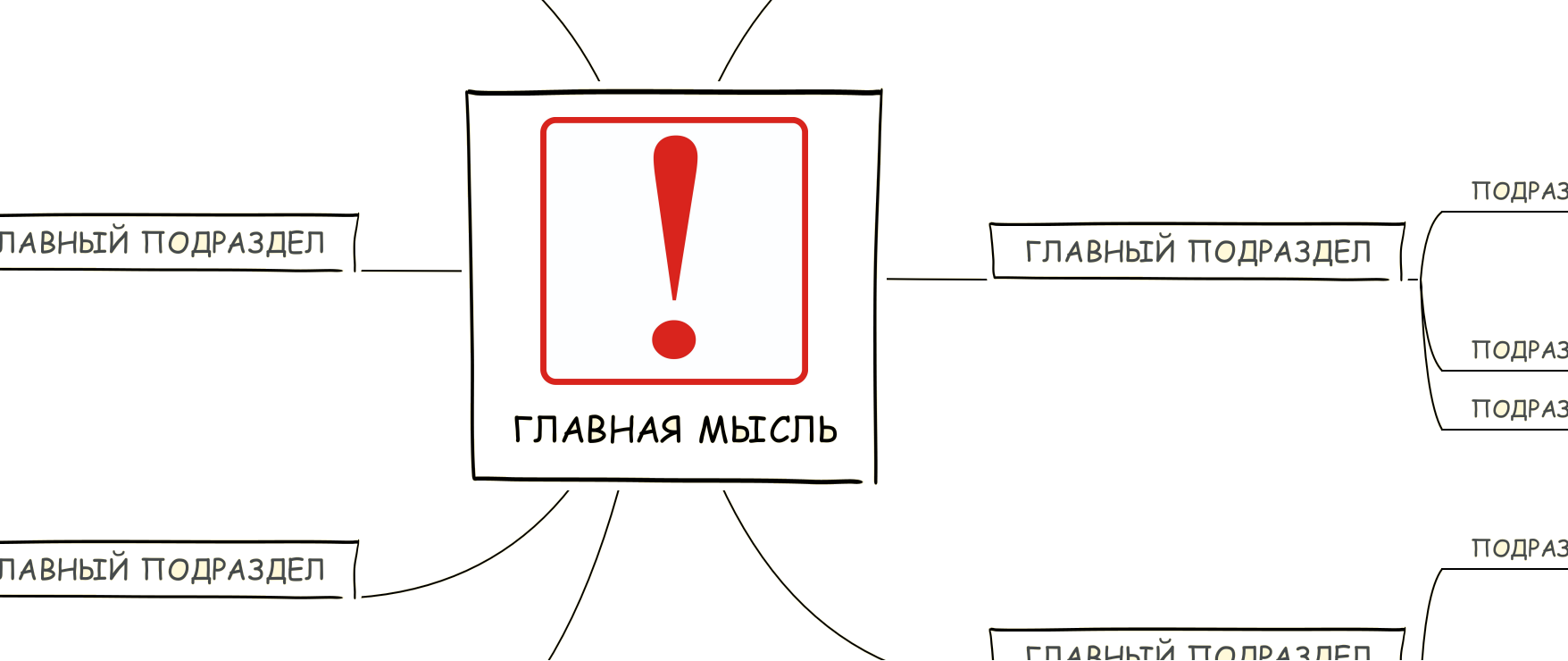
- Since we use visualizations when constructing the mental map, we use the right hemisphere of the brain, which is responsible for aesthetics and pondering of the problem as a whole. It is through this that we can ponder what is depicted on the map from different sides. With linear recordings, such involvement of the right hemisphere of the brain is minimal .

- Linear recordings take a lot of time , because a person doesn’t write very quickly by hand. We have to shorten the words, they are not always written clearly, and this is to the detriment of the quality of the records.
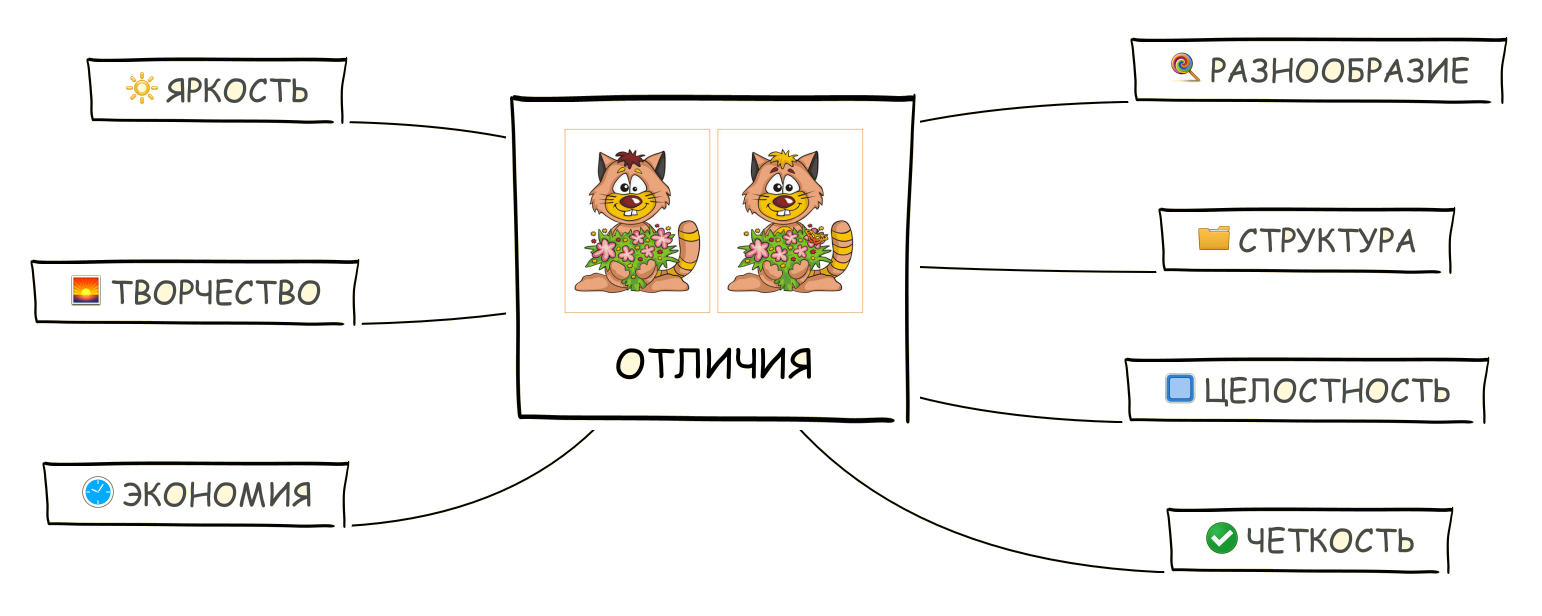
Are mental cards popular?
Who invented mental cards?

Analogs of various connection diagrams have been used since quite early times, but the creator of the modern method of mental maps, such as we know it now, is Tony Buzan - an English psychologist, author and co-author of more than 80 books, the most famous of which are considered “Superthinking” and “Teach think of yourself. ” The first book describing the technique of mental cards was published in 1974 - "Work with your head."
Here is how the author describes the events that prompted the development of this technique:
“At one time in my second year at the university, I somehow went into the library and asked if they had books on brain theory and its practical capabilities. The librarian, without hesitation, sent me to the department of medical literature!
When I explained that I was not going to do brain operations, but only use it correctly, they politely answered that they apparently did not have such books in the library.
I went out in complete amazement.
Like my other classmates, I was in a state known to any average student: a growing realization that as your study load grows, your brain is losing ground to high demands on thinking, creativity, memory, problem solving, analysis and compose ”in the course of written work. Like others, I was increasingly confronted with the phenomenon when the return on academic work falls, despite the efforts made, and at times it seems completely zero. The paradox was that, it seemed to me, the more I took notes and taught, the the result was worse!
The logical consequence of both possible action strategies in that situation was, as it seemed to me, a dead end. Begin to make less effort, the mass of important information, and, as a result, failure in the exam, falls into the category of not learned. I continued with even greater perseverance - outlining in more detail and spending more and more time on it - the result would still be the same downward spiral of success.
The key to genuine success, I finally decided, should be sought in the answer to the question of how rationally I use my intellect in general and my mental abilities in particular, and this realization led me to the library.
When I left it that day, it suddenly occurred to me that the problem that I had, not finding the necessary literature, perhaps came in handy. Since such books have not yet been written, I stepped into the protected area, where there is genuine scope for an inquiring mind. ”
Do they use them in the world?
Over time, the usefulness of a particular technique is always determined by the number of people who use it. More than 40 years have passed since the release of the first description of the methodology, but nevertheless, the technique of mental maps lives on, develops, and, most importantly, is used. Turning to Google Trends:
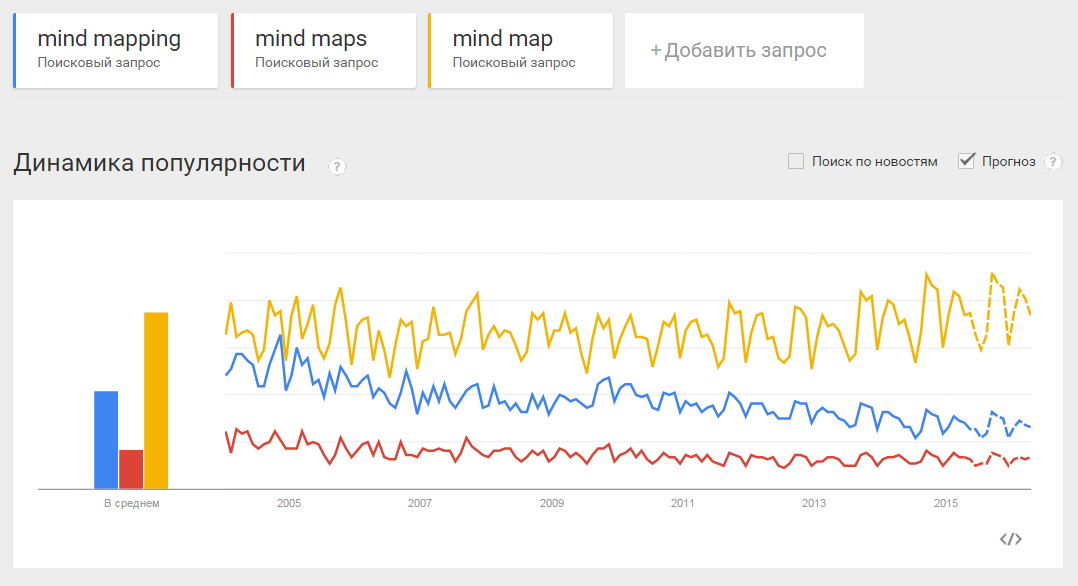
In general, mind mapping is a consistently used query over the past 11 years. The countries with the largest number of such requests were suddenly Indonesia and Thailand. Quite different statistics in Russia. Only in 2011, this technique began to enjoy interest in our country:
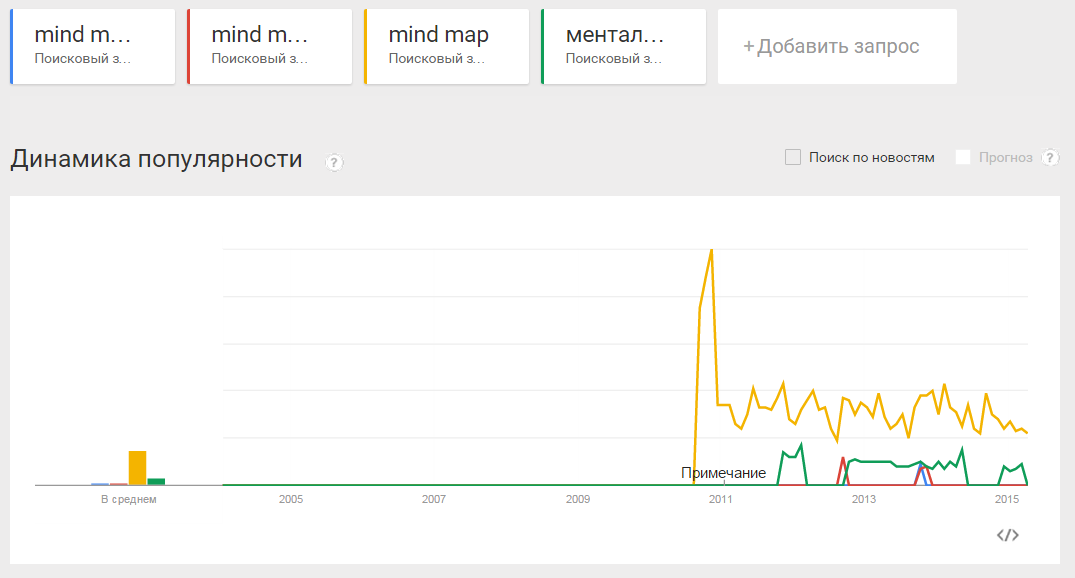
Why don't people use them everywhere?
Like everything in our world, the technique of mental cards also has disadvantages:
- Complex, complex things are simplified , and many details are extremely generalized . The appearance of order is created where it does not exist. Sometimes this is useful, but sometimes it only creates the illusion of being in control of the situation, the illusion of a general understanding of the problem and the absence of complex hidden relationships.
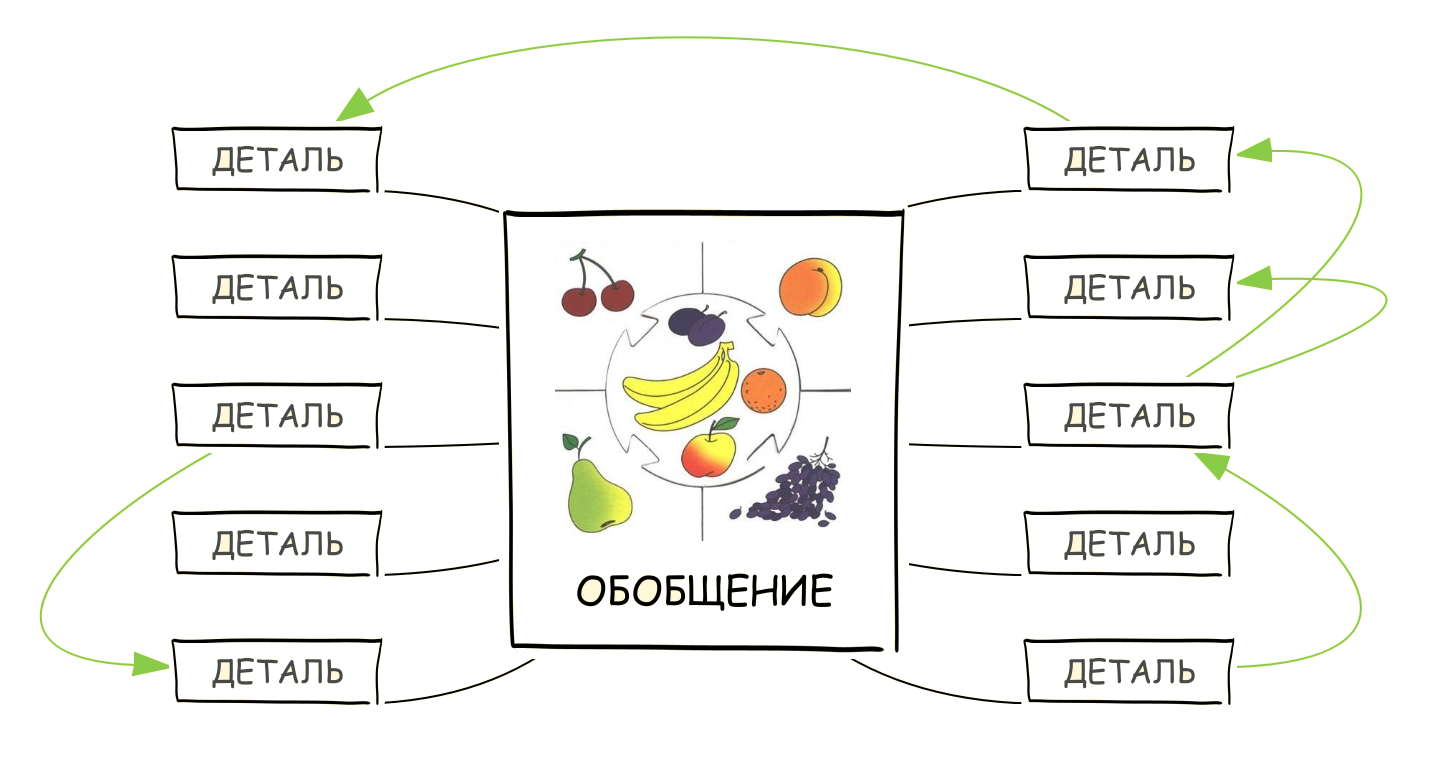
- Since pictures are used in the construction of maps, associative thinking is included. But associations are dynamic things that change and transform over time, and what caused us one association six months ago does not cause exactly the same thing now. Such pictures direct the flow of thoughts when reading the card is not on the right side, as originally planned. False associations ultimately slow down understanding of the data on the map.

- A mental map is a reflection of one’s thinking, or one person who compiled it, or a group of such people, so maps are most often purely individual . If you give the card to another person to read, it may happen that he either does not understand some of the details, or, even worse, incorrectly perceives them.
- When processing large or complex data when building a map, a complex picture can be obtained , with multiple divisions, with a huge number of links, branches and keywords. The effectiveness of such a mental card falls at times.

This is one of the reasons why the mental map technique has not yet supplanted linear recordings. But there are also imaginary shortcomings that lie in the way of applying this technique:
- Ignorance about the technique . The popularity of mental maps has not yet reached such a scale that everyone knows about them.
- Opinion "I do not know how to draw . " Many believe that this is a serious obstacle to building a map, but in fact such a skill is not required. Moreover, there is a simple exercise that helps to prove that everyone can draw a minimal set of characters. Try:
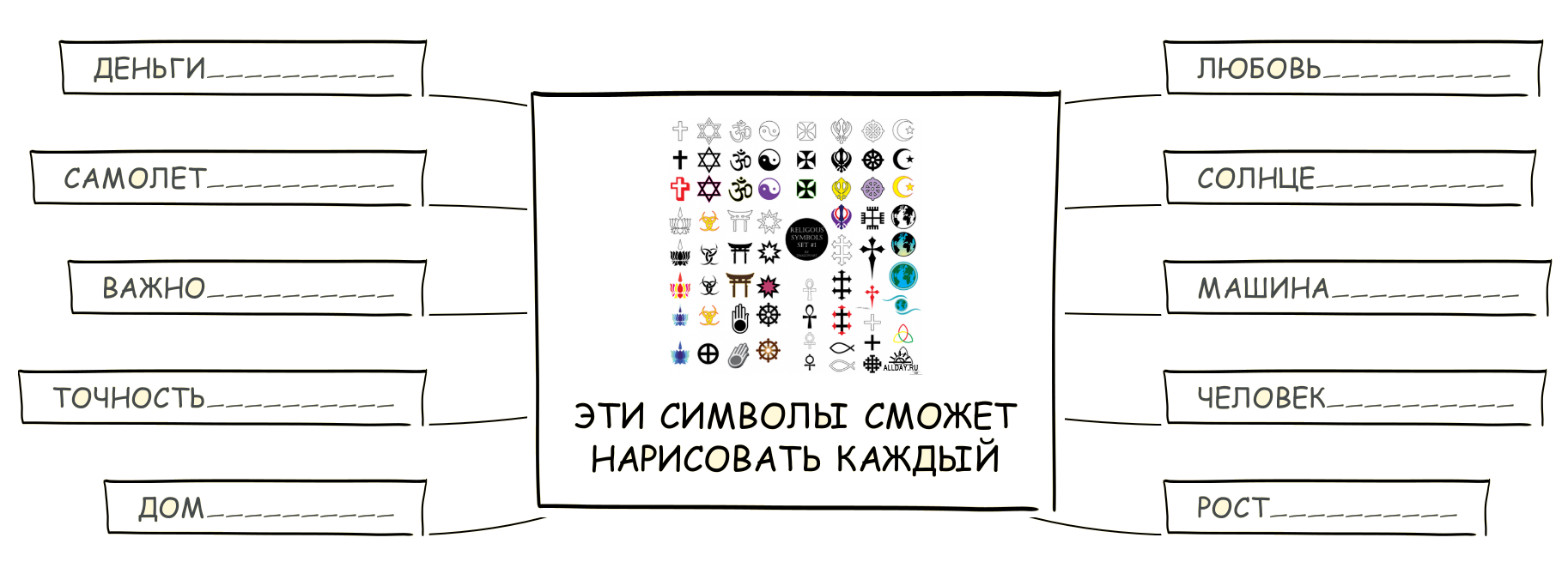
- The belief that this is children's fun and that there is nothing for a true professional. In fact, every self-respecting professional has his own set of different tools to achieve goals: visualization, planning, time management and others. And the fact that many around the world use mental cards is an indicator of the effectiveness of this tool.
- Ментальные карты дольше делать, чем линейные записи. Поначалу, на первых порах применения этой техники, это действительно будет так — как и при обучении любому новому делу. Но в дальнейшем карты будут щелкаться как орешки, намного быстрее обычных заметок.
- Убеждение “Я думаю линейно” и “Всю жизнь пользуюсь линейными заметками, и нормально”. Да, линейные записи плотно входят в нашу жизнь начиная лет с семи, и дальше намного удобнее и привычнее использовать именно их, даже в своих размышлениях. Но не является ли это просто привычкой? И если другие методики дают большую эффективность, то почему не попробовать их?
- Мнение “Ментальные карты нельзя применить для повседневных задач”. Напротив, это методика применяется для всех сфер жизни, где требуется принятие решений, какие-либо списки, анализ чего-либо. Сюда входит практически любая область из нашей повседневной жизни.

Как создать ментальную карту?
“Всякий художник был поначалу любителем”
To build mental maps, it is enough to follow certain simple principles. For example, let’s try to create a mental map for this entire article.
First you need a clean horizontally rotated area, such as a sheet, board, tablet, phone, or workspace in graphic editors. The more data you process, the larger the work area you will need. I will do my example using the online mental map editor.

In the center of the workspace, describe the image of the problem, task, or area of knowledge. In our case, this is an article about mental maps.

Remember to use drawings and symbols where possible. This will make the card more vivid and colorful, and as a result - more memorable.
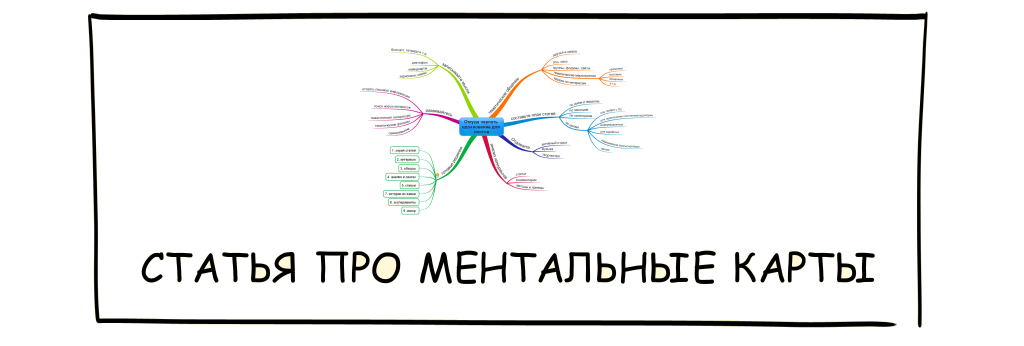
From the central image we lay thick structural branches, the main subsections of our article. It is recommended to use different colors for key branches and words, as well as colorfully design them. Since I love minimalism, I’m a little away from the rules.

But nothing prevents me from filling out the main subsections with the corresponding pictures. We also add the branches of the next level. It must be remembered that only one word should be on one branch. This allows us not to overload the map, but in the process of inventing this one word, we can highlight the essence of the material.
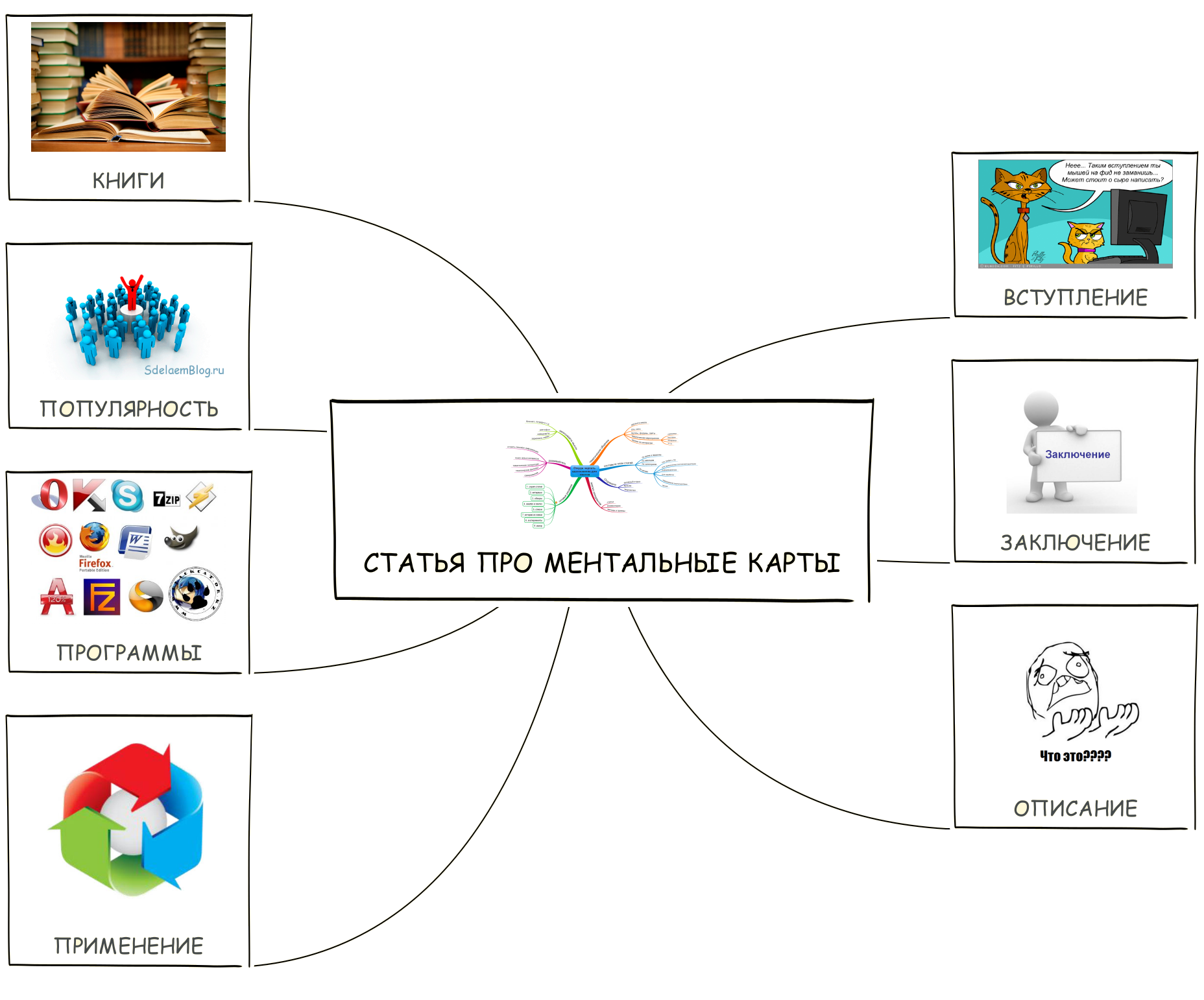
The size and thickness of the letters on the branches vary depending on the distance from the central image. The further - the less. If there is a relationship between the details on the map, be sure to show it. We complement our example with other branches and links.
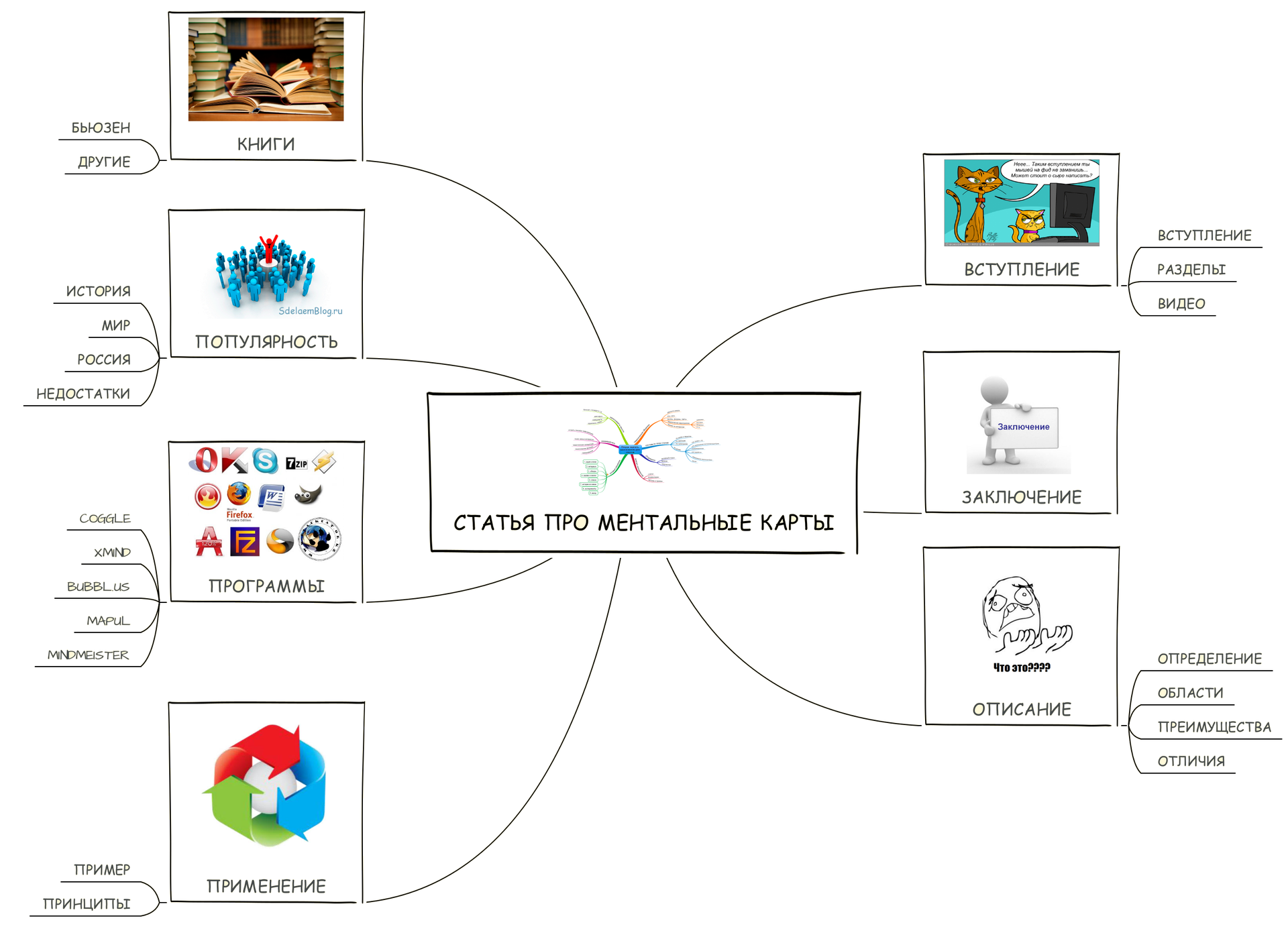
So we got a finished mental map. Not the most colorful because of my love for minimalism, but very informative.
Are there any programs for creating mental maps?
To draw mental cards by hand is a pleasure for an amateur, and sometimes it is much more convenient to map a card on a computer. There are a large number of both online editors and programs / applications for building mental maps:
- Coggle is a simple and easy to learn online mental map editor.
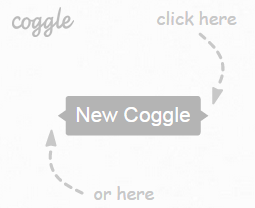
- XMind is a serious software for building both mental maps and various other diagrams.
- Bubbl.us is an online editor and application.
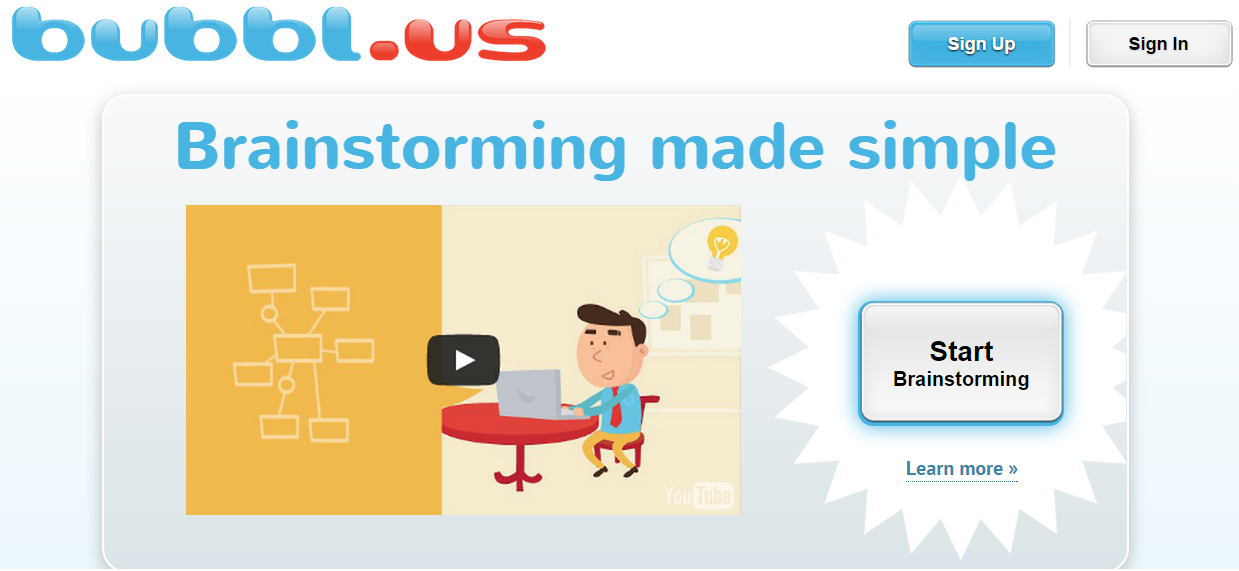
- Mindmeister is a very nice online map editor with tons of color themes, pictures, symbols and other features. It was he who was used in this article to build mental maps.

- Mapul is another representative of online editors.
What to read on this topic?
Of course, it is best to learn about the methodology of mental maps from the source, so the best books to read are Tony Busan's “Super Thinking” and “Work Your Head”, as well as his other books.
Another educational book - “Visualize it! How to Use Graphics, Stickers, and Mind Cards for Teamwork ”by David Sibbet.
Conclusion
Appearing in the 80s of the twentieth century, the technique of mental cards continues to evolve and gain popularity around the world. It will help both with solving everyday problems and with goals in a professional way. It can be used both separately and together with the GTD ( Getting Things Done ) technique , using it to build various task maps. We can say with confidence that the list of tools for managing affairs, tasks and goals has been replenished with another worthy and effective technique.
